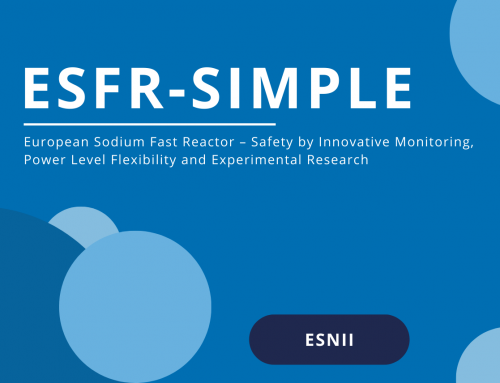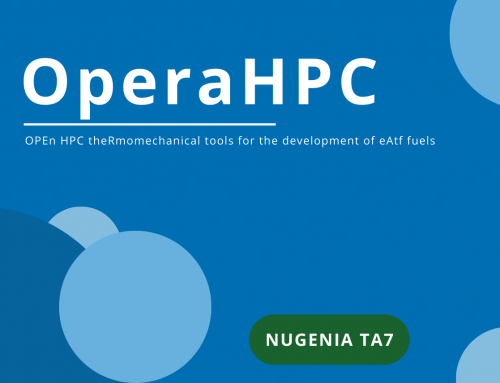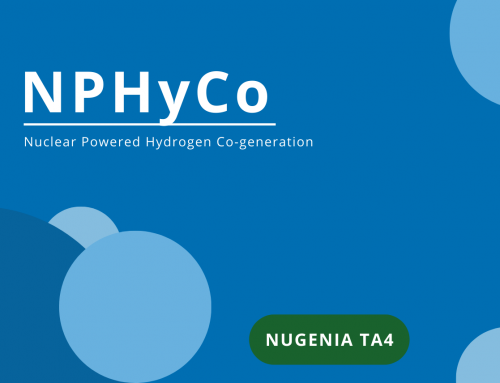
OBJECTIVES
The AMHYCO project main objective is to propose innovative enhancements on the way combustible gases are managed in case of a severe accident in EU Gen II/III reactors in operation.
To reach this main objective, the AMHYCO project has three main specific objectives:
- Objective 1: To improve the Severe Accident Management Guidelines (SAMGs) for both in-vessel and ex-vessel phases with respect to combustible gases risk management, using both numerical and experimental results.
- Objective 2: To investigate experimentally phenomena that are difficult to predict numerically: H2/CO/H2O combustion and PARs behavior under realistic accidental conditions, taking into account the safety systems interaction.
- Objective 3: To improve the predictability of the numerical tools – Lumped Parameter (LP), 3D containment and Computational Fluid Dynamic (CFD) codes – used for explosion hazard evaluation inside the reactor containment to gain relevance in supporting SAMGs design and development.

EXPECTED IMPACTS
- The AMHYCO project will impact the way that the severe accidents are managed for the EU Gen II/III reactors in operation. It will be done improving the severe accident management by means of the SAM guidelines to consider the combustion risk in the operator actions and the actuation of the safety systems. This fact will improve the safety and reduce the risk of containment failure and therefore minimize the radiological risk.
- Clearly, the project AMHYCO will impact the quality of future evaluation and design of hydrogen and carbon monoxide mitigation systems and open a new philosophy of simultaneous use of venting operation in conjunction with PARs and means to enhance the post accidental management guidelines.
- The AMHYCO project will impact the development and qualification of codes and correlations for combustion risk estimation, which will improve our knowledge and reduce our vulnerabilities about the severe accident conditions in a nuclear containment.
- It is expected an impact on how the PARs are maintained and the credit that is given during an accident. It will impact the plant safety and the future PAR designs.
- The location of the PARs already installed in European NPPs was decided based on analysis using certain tools, mostly lumped-parameter codes, and engineering judgements. The 3D and CFD codes will improve the reliance of the systems as well as optimize the number and location necessary for a plant in and outside the primary containment, which clearly impact the economics of such back fittings.

HIGHLIGHTS
- The project will aim at understanding the combustion risk of H2, H2O and CO mixtures both experimentally and numerically.
- This experience will allow the creation of a methodology based of new correlations to predict the combustion risk that are adapted specifically to the LP, 3D and CFD numerical codes.
- The knowledge gained thought the experimental and simulation work will result in the creation of guidelines for the SAMGs considering combustible risk management.
- Several resources will be available to implement doctoral dissertations within the framework of the project and to support mobility of students in order to favor cross sectoral studies to reach AMHYCO objectives.

PARTNERS
UPM / CIEMAT / IRSN / CNRS / FZJ / FRAMATOME GMBH / RUHR-UNIVERSITAET BOCHUM / JSI / LLC ENERGORISK / NRG / CNL / LGI

DURATION & BUDGET
October 2020 – September 2024 – 4 years
EU contribution: 3 974 402.50 €

CONTACT
Technical Project Leader:
Gonzalo Jiménez (Universidad Politécnica de Madrid, UPM)
Email: gonzalo.jimenez@upm.es

EVENTS
- Middle step technical workshop (2022): the technical content of the numerical and experimental results will be shown in an open workshop, targeting the main nuclear industry partners and the academia.
- Final step technical workshop (2024): the results of the project, especially the guidelines, will be shown in a fina

FOR DOWNLOAD

WEBSITE AND SOCIAL MEDIA
Check out the project website.
Follow the project on LinkedIn.

This project has received funding from the Euratom H2020 programme NFRP-2019-2020 under grant agreement No 945057.




